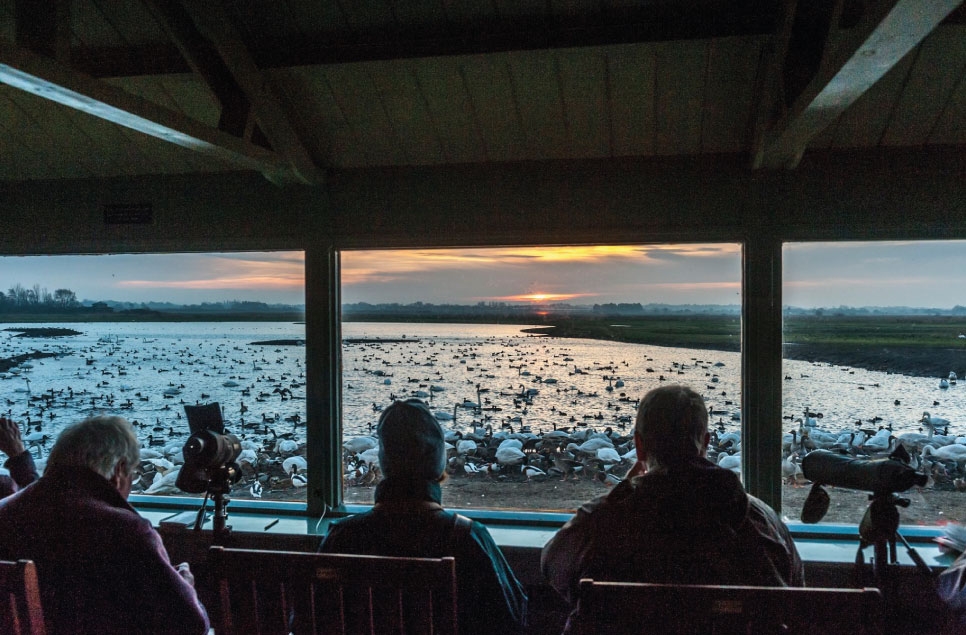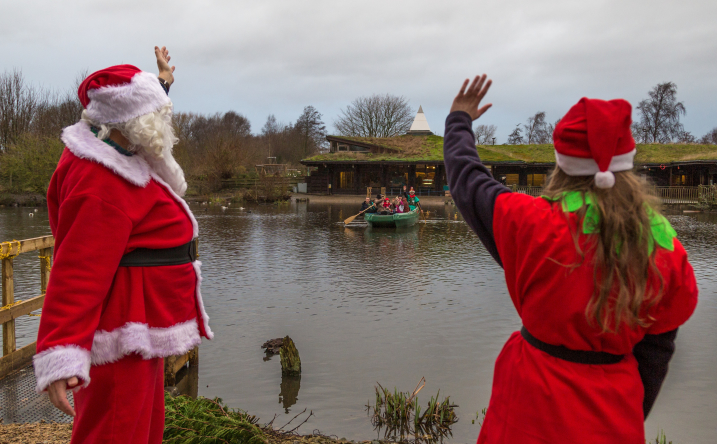A wild guide to winter
It’s that amazing time of the year when the winter waders, ducks, geese and swans arrive at WWT Martin Mere Wetland Centre. Everyday at 3pm, there are wild bird feeds from the Discovery hide, that also include a wardens talk to learn about the species. At 3.30pm the feed takes place at the Raines Observatory.
As you head out of the door and walk up towards the discovery hide, you have the option to turn left or right to walk along the nature trail. Turning right takes you to a woodland area towards the Ron Barker hide, whilst turning left allows for views across the mere, Janet Kear hide and the reedbed walk.
Below is a summary of what wildlife you are likely to see whilst you explore this winter.
The Mere
![Whooper-Swans-[717-x-403].png](/uploads/images/2022-07-21/whooper-swans-717-x-403.png)
Siting in the discovery hide viewing the vast expanse of water on the Mere is very relaxing and gives you a glimpse into the lives of these fascinating birds. A bird of prey flies over disturbing a flock of lapwing they fly into the air swirling and darting to confuse the predator.
We get a huge variety of winter water birds that have travelled huge distances to spend the winter at WWT Martin Mere. At the daily swan feeds, you can see up to 1000 Whooper swans up close. They have come all the way from Iceland with their cygnets, who are only months old when they make the migration. Mad to think they have flown all that way!! The cygnets are a lovely dark grey colour and that will fade over the winter as they moult through to their stunning adult white plumage.
Also at the swan feeds you’ll see pintails, these are stunning ducks, the males are grey and cream with a chocolate brown head and a long thin tail which is how they get their name. Look out for wigeon feeding amongst the swans, they are also grey, have a pink chest, red head and a bright yellow Mohican and they don’t quack they whistle. My favourite are the pochards these are diving ducks. The males are grey with a red head, black chest and bottom and they are perfectly designed for diving under the water to feed on the grain we throw into the water. The pochard come to us all the way from Russia to escape the cold and enjoy the lovely food we provide at WWT Martin Mere, but you won’t see many female pochard at the swan feeds, that is because the female pochard go to Spain for the winter, which sounds like a much better idea!!
Look out for colour rings on the swans there is a touch screen interactive in the discovery hide where you can type in the numbers and find out all about the birds how old they are, their names and where they’ve been seen.
Reedbed walk

The reedbed walk is a feast for your senses through sight and sound. Spend the time simply stopping and listening and enjoy being immersed in nature.
The reedbed walk is accessed from the lower level of the Harrier hide. It is one mile in length and can be muddy underfoot so good walking boots are advised. There are a number of benches out on the walk for a rest and the opportunity to spend some peaceful time in your surroundings.
Several marsh harriers, peregrines, kestrels and barn owls have been seen across the reserve with at least one little egret seen daily and an infrequent great white egret. You may also see gadwall, mallard, tufted duck, pochard, little grebe, reed bunting and blackcap as you walk around.
The species in the reedbed can be very elusive and are often heard and not seen, so you need to take your time and simply listen whilst out there. There are at least 9 cetti's warblers so it's worth listening out for their signature call. You may also hear water rails, bearded tits and chiffchaffs. Time to brush up on your bird call identification!
The swan feeds take place daily at 3pm from the Discovery hide and 3.30pm from the Raines Observatory. You don’t need to book in advance and they are free to watch. Normal admission charges apply to enter the centre. For more information visit www.wwt.org.uk/martinmere


